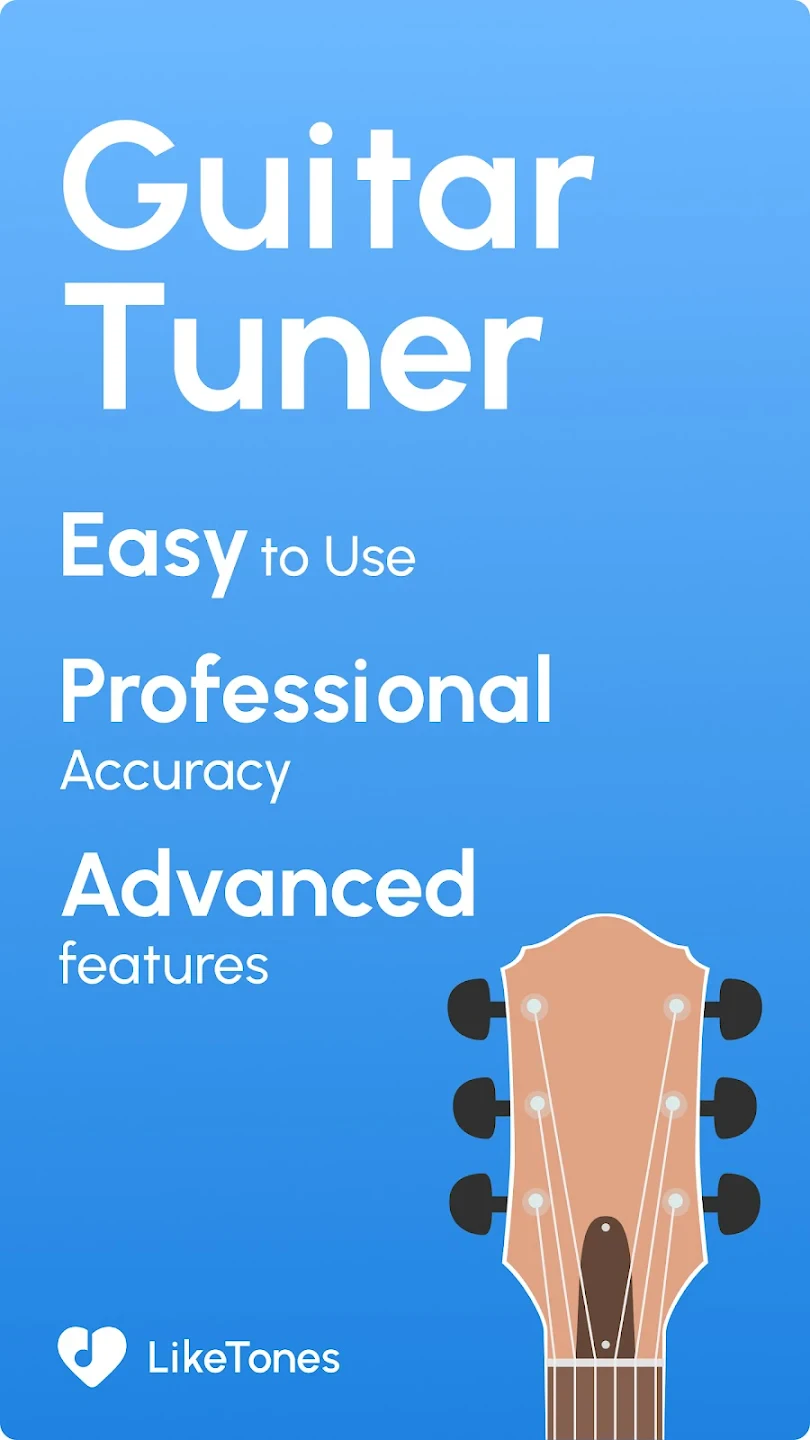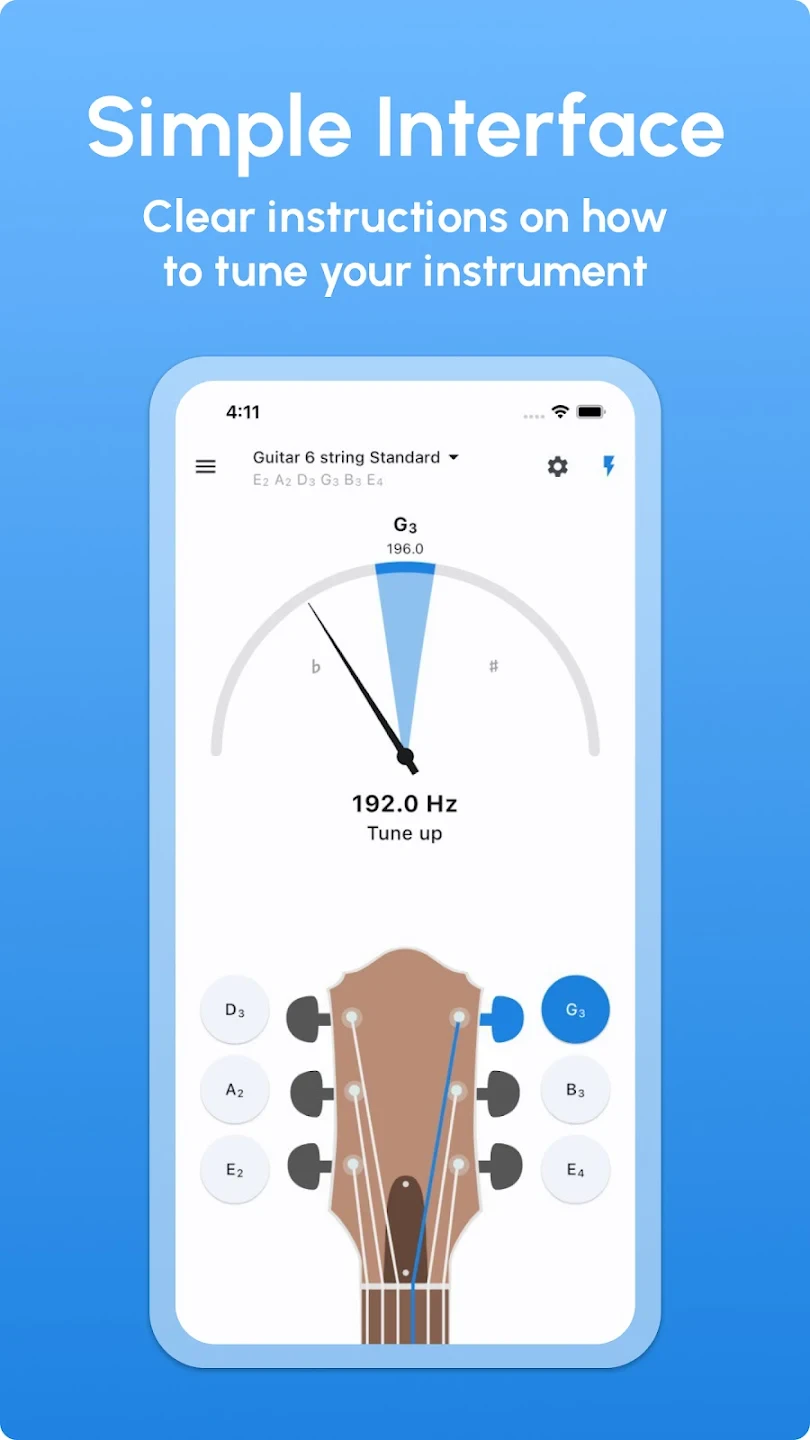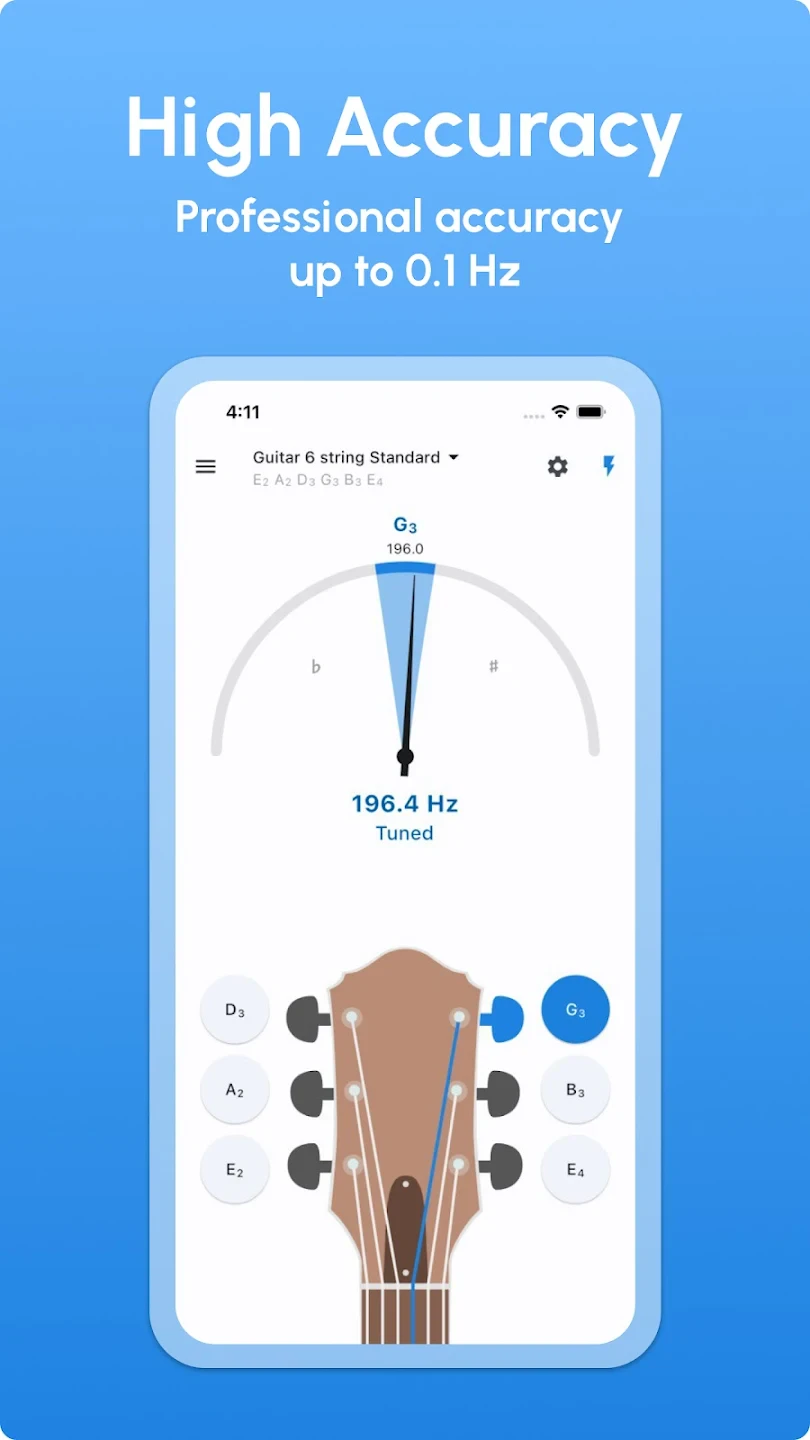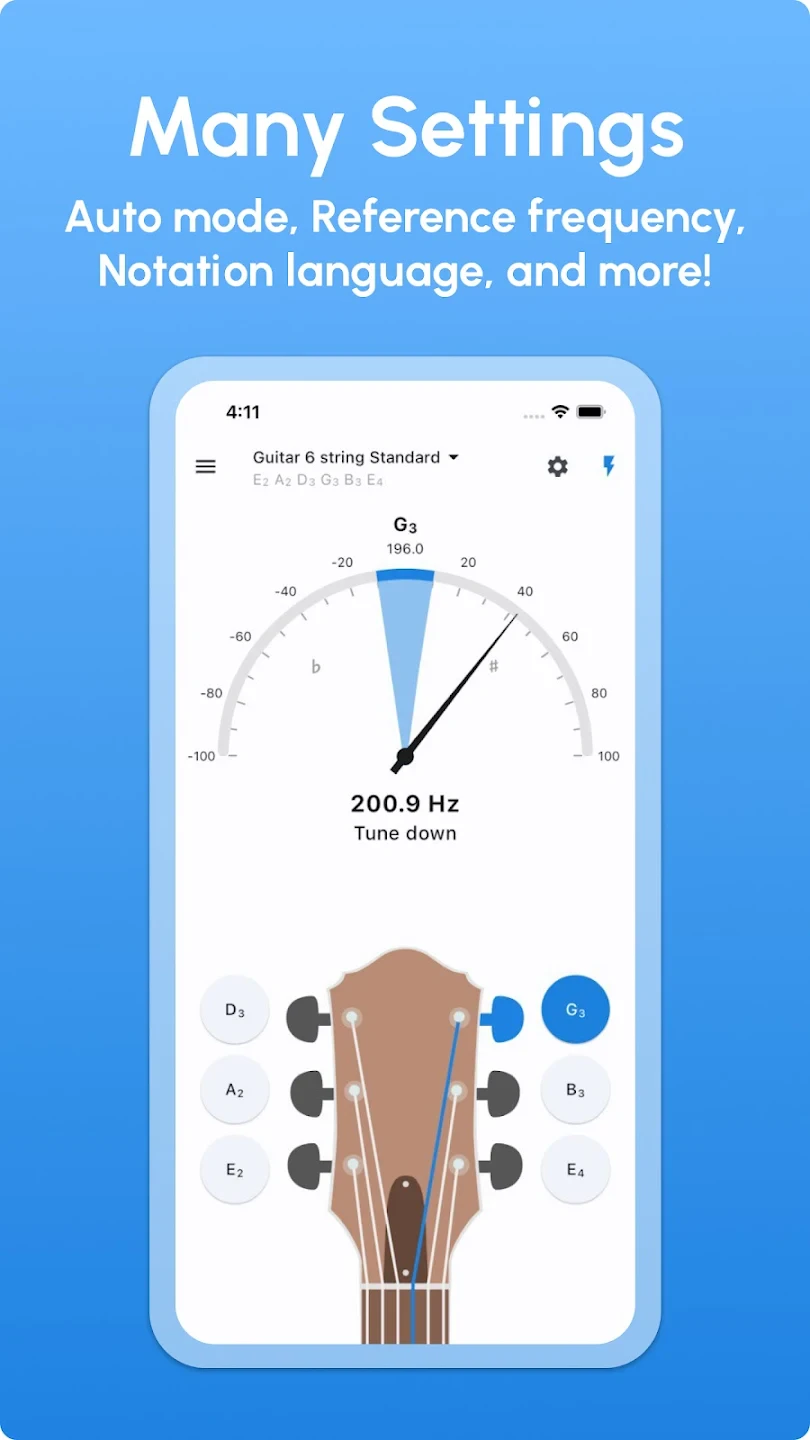 |
|
| Rating: 4.9 | Downloads: 1,000,000+ |
| Category: Music & Audio | Offer by: LikeTones |
Guitar Tuner – LikeTones is the essential application for guitarists, providing accurate and user-friendly tuning solutions directly from your mobile device. It offers precise electronic tuning by listening to the sound produced by your guitar or using an internal reference note, catering perfectly for beginners seeking guidance and experienced players needing quick adjustments before performances or recordings.
The appeal of Guitar Tuner – LikeTones lies in its portability and immediate usability; you no longer need bulky hardware, saving time and space. Its practical usage spans from meticulous practice sessions to quick tuning between songs during live gigs, ensuring your instrument always sounds its best, boosting confidence and playing quality for musicians on the go.
App Features
- Accurate Electronic Tuning: This feature allows you to play your guitar and the app will electronically analyze the string pitch and display whether it’s sharp, flat, or perfectly in tune. The benefit is immediate accuracy, saving guesswork and helping develop proper tuning habits, which is invaluable for achieving a professional sound.
- Reference Note Tuning: Utilizing your device’s internal speaker, this function emits the exact frequency for the string you select (e.g., standard E or drop D). The technical aspect involves generating sine waves at precise frequencies, providing an objective tuning point free from external noise, ideal for situations where listening to your guitar isn’t practical. This significantly enhances usability by offering a reliable anchor for tuning, especially useful for absolute beginners or in noisy environments.
- Visual Tuning Aid – Chromatic Scale: A clear, colored bar graph appears, visually indicating if each string needs to be raised or lowered, and how far. This solves the problem of auditory confusion by providing an immediate, visual feedback loop. For example, a string might show a red bar indicating it’s flat (needs sharping), guiding the player visually towards the correct pitch.
- Multiple Device Setup: You can easily save your preferred tuning configurations (like standard tuning, drop D, etc.) specifically for each connected mobile device or Bluetooth MIDI keyboard/controller. This is valuable for users who switch between multiple phones, tablets, or accessories throughout their day or during travel. Key benefits include time saving and consistency, as you don’t have to reconfigure settings every time you use a different device.
- String Selection Customization: The app typically allows you to choose which string across the fretboard to tune, offering flexibility beyond just tuning the open strings to specific tunings or chord setups. The purpose is to provide precision control for complex tuning scenarios, like setting individual string tensions for alternative tunings, which matters significantly for users exploring different musical styles or creating custom sounds. It supports flexibility by accommodating various string gauges and guitar configurations.
- Advanced Tuning Presets (Optional Feature): For dedicated musicians, this function might include presets for common chord voicings (like G, D, A tuning), automatically tuning all relevant strings simultaneously to the correct pitch for that chord. It supports overall functionality by drastically simplifying the setup for specific song keys or playing styles, using technical terms like ‘simultaneous pitch adjustment’.
Pros & Cons
Pros:
- High Accuracy and Reliability
- Portability and Convenience
- User-Friendly Interface and Ease of Use
- Cost-Effective Compared to Hardware Tuners
Cons:
- Potential for Minor Calibration Drift Over Time
- Limited Advanced Features Compared to Desktop Software
- Dependence On Device Microphone (for audio input method)
- Basic Tone Generation for Reference Note (sometimes)
Similar Apps
| App Name | Highlights |
|---|---|
| GuitarTuner Pro |
This app offers precision tuning algorithms and features like tap-tempo controls for delay-based reference or saving custom tunings. It focuses heavily on accuracy and includes advanced visualization options. |
| Ultimate Guitar Tuner |
Designed for tuners with more comprehensive needs, this app provides multiple tuning methods, metronome, tuner, and chromatic scale views. It boasts high customization potential and supports various instrument tunings. |
| Ultimate Guitar Tuner |
Offers sophisticated tuning modes, including drum tuner, metronome, and extensive chord presets. This app targets users looking for a multi-functional music tool with powerful editing capabilities. |
| QuickChord |
Focused on mobile-first usability, this tuner includes guided tuning steps, quick presets, and a clean interface optimized for touch. It emphasizes simplicity and speed for everyday tuning tasks. |
| Music Notes: Guitar Tuner & Lessons |
While offering tuning alongside lessons, its tuner section provides visual and audio feedback and integrates notation concepts. Useful for combining tuning with educational content and music reading fundamentals. |
Frequently Asked Questions
Q: How accurate is Guitar Tuner – LikeTones?
A: Guitar Tuner – LikeTones uses electronic signal processing to measure frequency accurately and generally provides tuning that is very precise, comparable to many hardware tuners. Accuracy depends slightly on factors like the quality of your microphone (for audio input) or the environment (for reference note), but it offers reliable tuning for most practical purposes.
Q: Can I use Guitar Tuner – LikeTones on multiple devices?
A: Absolutely! The app is designed for mobile devices (both iOS and Android). You might need to log in with the relevant store account (Apple App Store or Google Play Store) to access your copy on another device, but you can install and use the tuner on multiple phones, tablets, or even smartwatches if available, as long as they have the app.
Q: What if my guitar isn’t plugged in? Can I still use the tuner?
A: Yes, definitely! Guitar Tuner – LikeTones works by capturing the audio directly from your guitar (usually via your device’s microphone input or headphone jack). As long as you can play your guitar and the app hears the sound, it can analyze and tune it. This is the standard way to use a phone or tablet tuner.
Q: Does the app play a specific reference note if I choose the ‘Reference Note’ mode?
A: Yes, when you select ‘Reference Note’ mode and choose a string (e.g., the fifth string ‘A’), the app will play the correct frequency (440 Hz for A=440) through your device’s speaker via headphones or at a low volume through the device’s speakers. You then tune your guitar string to match that specific pitch.
Q: Is there any difference between using the ‘Tone’ and ‘Reference Note’ features?
A: Yes, the primary difference is in the approach. The ‘Tone’ feature listens to *your* guitar playing, analyzing the sound directly. ‘Reference Note’ generates a precise frequency tone for you to match with your instrument. Both methods can be accurate, but the ‘Tone’ method requires you to play a note, while ‘Reference Note’ provides an external anchor point. Choose based on preference or the situation (e.g., ‘Reference Note’ might be quieter).
Screenshots
 |
 |
 |
 |






